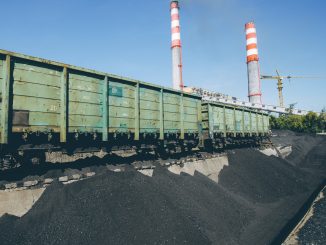 By Dr Kirit S. Parikh, Former Member, Planning Commission, and Chairman, Integrated Research and Action for Development
By Dr Kirit S. Parikh, Former Member, Planning Commission, and Chairman, Integrated Research and Action for Development
Coal has been the major energy resource of India. The country is short of oil and gas, but coal reserves are relatively abundant. Coal has been the mainstay of our energy use.
The major use of coal in India is for running power plants. What are the implications for coal of a dramatic reduction in the cost of solar power and battery technology as is expected by many experts? Would this make coal-based power generation economically less attractive? Also, coal faces serious challenges owing to local air pollution due to emissions of particulates, SOx, and CO2, and the displacement of people and land degradation due to mining. Can clean coal technologies help? Table 1 shows the energy resources of India.
If coal production keeps growing at 5 per cent per year, we could run out of coal, including coal from indicated and inferred reserves, in less than 40 years. Details of coal use in different sectors are given in Table 2.

 We see that the power sector is the major user of coal, consuming 67 per cent of the thermal coal used in the country. I will, therefore, look at the power sector.
We see that the power sector is the major user of coal, consuming 67 per cent of the thermal coal used in the country. I will, therefore, look at the power sector.
 Table 3 shows a projection of the requirement of coal in the power sector without any consideration of environmental concerns and gives us an upper bound of the amount of coal that the power sector would need in the future. The projection has been made with a multi-sectoral inter-temporal activity analysis optimising model with coal efficiency improvement at 1 per cent per year and only supercritical plants. The projected requirement is huge and cannot be realised unless the environmental issues are addressed.
Table 3 shows a projection of the requirement of coal in the power sector without any consideration of environmental concerns and gives us an upper bound of the amount of coal that the power sector would need in the future. The projection has been made with a multi-sectoral inter-temporal activity analysis optimising model with coal efficiency improvement at 1 per cent per year and only supercritical plants. The projected requirement is huge and cannot be realised unless the environmental issues are addressed.
Role of clean coal technologies in controlling local air pollution
The government already requires that coal plants have modern electrostatic precipitators (ESPs). One needs to make sure that these precipitators trap particulates of 2.5 micron size. This will involve some retrofitting of old plants and additional investments in new plants.
Controlling SOx and NOx emissions requires flue gas desulphurisation (FGD). Also, selective catalytic reduction (SCR) can help clean up plants further. This technology is somewhat more expensive. Nevertheless, coal-based power may still remain competitive with other energy alternatives. In our model scenario, we have explored the role that FGD and SCR can play in a multi-sectoral inter-temporal optimising model that considers various alternative power technologies and optimises investment and the operating costs of power production with a 40-year horizon. Table 4 presents the characteristics of the different plants considered.

We generate two scenarios, one in which all coal plants have ESP and the other in which all coal plants have ESP, FGD and SCR. The share of generation from coal-based plants exceeds 95 per cent in both the scenarios. Table 6 shows that with ESP, FGD and SCR, the SOx and NOx emissions come down substantially. To control local air pollution, end-of-the-pipe measures should be adequate.


Table 7 shows the cost in terms of gross domestic product and private consumption. It shows that SOx, NOx and particulate emissions control does not involve any significant cost to the economy. However, to limit the levels of CO2 emissions, we need to explore the role of carbon capture and storage (CCS).

Role of CCS in controlling CO2 emissions
We consider the CCS technology of supercritical pulverised coal (PC) boilers with MEA-based CCS. In this scenario, CO2 is captured after the combustion of coal (or other fossil fuel) using the absorption of CO2 over a solvent such as MEA, which is then exposed to higher temperatures where the CO2 is stripped off from the solvent. Table 8 presents the technological and cost details of CCS technology.

We develop two scenarios where the total CO2 emissions over the period 2010 to 2050 produced by India are given by 133 GT and 156 GT. These are arrived at by allocating the global carbon budget to different countries, based on its population in 1990 and 2010. The two scenarios with the carbon budget (CB) are as follows:
- CB156: A carbon budget of 156 GT from 2010-2050 imposed
- CB133: A carbon budget of 133 GT from 2010 to 2050 imposed

In CB156 GT, coal accounts for 65 per cent generation in 2050. However, in CB133 GT, coal power generation is only 12 per cent. This shows that it is cheaper to go in for nuclear power, hydroelectricity and renewables than CCS.

The impact on GDP is not very large, but is somewhat larger on private per capita consumption, which is 4 per cent lower in CB156 and 11 per cent lower in CB133 in 2050. The cumulative loss will be substantial, as can be seen in Table 11.

Impact of a steeper decline in renewable energy costs
In CB133 GT, the assumed fall in the costs of renewable technologies is modest. With a much steeper decline in the costs of renewable technologies, the role of coal, even with CCS, will be limited, unless, of course, the costs of CCS go down similarly and adequate CO2 storage capacity is available.
References
GTWG (2018), Final Report of Global Technology Watch Group Coal Roadmap for India submitted to the Department of Science and Technology.
Kirit Parikh and Jyoti Parikh (2018), “Can India Grow and Live within 1.5 degree CO2 Budget?”, Energy Policy, 120 (2018), 34-37.



